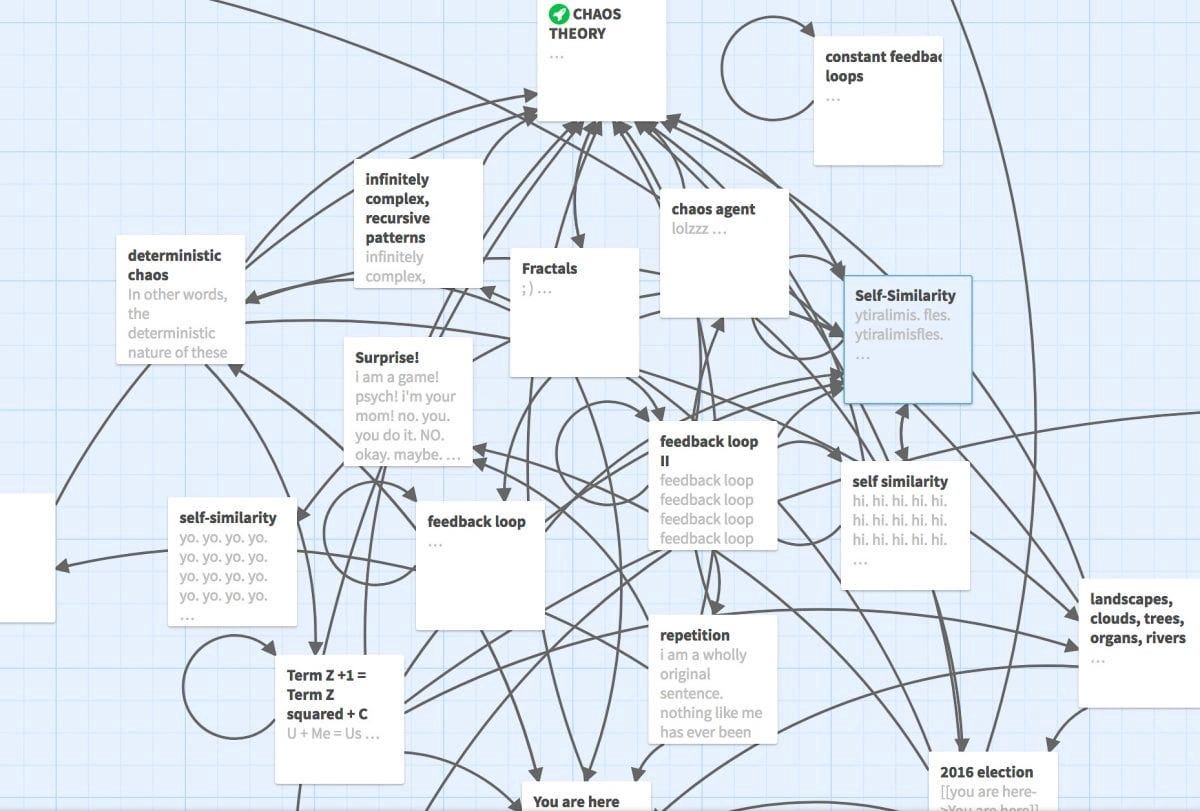
We interview interdisciplinary artist, designer, and performer Jessica Creane
Jessica Creane is a multi-hyphenate, immersive experience, game-theatre artist based in Philadelphia. She is also a professor of both serious and experimental game design at Drexel University. Jessica returns to NYC this week to remount her interactive game-theatre show Chaos Theory at HERE in Manhattan, which she also stars in as “Dr. Saoch.” Read our review of the experience.
She spoke to us over email about Jeff Goldblum, the magic circle, and why immersive theatre and games are “secret best friends. ”
This interview has been lightly edited for clarity.
No Proscenium: Could you tell us a little about yourself and your background in the immersive arts?
Jessica Creane (JC): I was recently described as a creative multi-hyphenate, which made me laugh and also really hit home. At a certain point you just run out of air saying that you’re a “writer-devisor-performer-director-producer-professor-activist-vegan-book binder-aspirational acrobat-game designer of tabletop, digital, finite, infinite, performative, legacy, and hybrid experiences about intimacy, agency, and philosophical moral conundrums,” you know?
But if we’re taking the chronological approach (and why not?), I started out working in new play development and found myself wondering how we could make work that was as much fun for the audience to see as it was for the creative team to make. This led me to an MFA program in devised, ensemble theater at The Pig Iron School of Advanced Performance Training in Philadelphia, PA, where we made work by “writing on our feet,” which is basically just devised theater speak for improvising. I’d made a few site-specific, interactive pieces over the years but in my last semester I took a class on the history of games that introduced me to this idea of a “magic circle” that meant that once we enter into a game space our actions no longer have any bearing on our lives outside of that game. Which anyone who’s played Trivial Pursuit with my family or Monopoly, ever, knows to be ridiculous. Feelings don’t end when the game ends and if that boundary was a false one, what was to stop me from exploding it?
NP: What, in a nutshell, is Chaos Theory about?
JC: Chaos Theory is about remaining playful in the face of uncertainty. 2016–2018 has been chock full of uncertainty and sometimes it feels as if we — the world/nation/individuals/etc.— are sliding precipitously into chaos, causing us to panic, but all too often we are actually slipping into an excess of order. Order presupposes an outcome and separates us into binaries and hierarchies, whereas chaos presupposes nothing and catalyzes surprising connections, creativity, and acts of agency.
Formally, this translates into game-theater; a series of comedic lectures and multi-player games framed as scientific experiments that invite the audience to deeply and playfully explore what we think of as chaos.
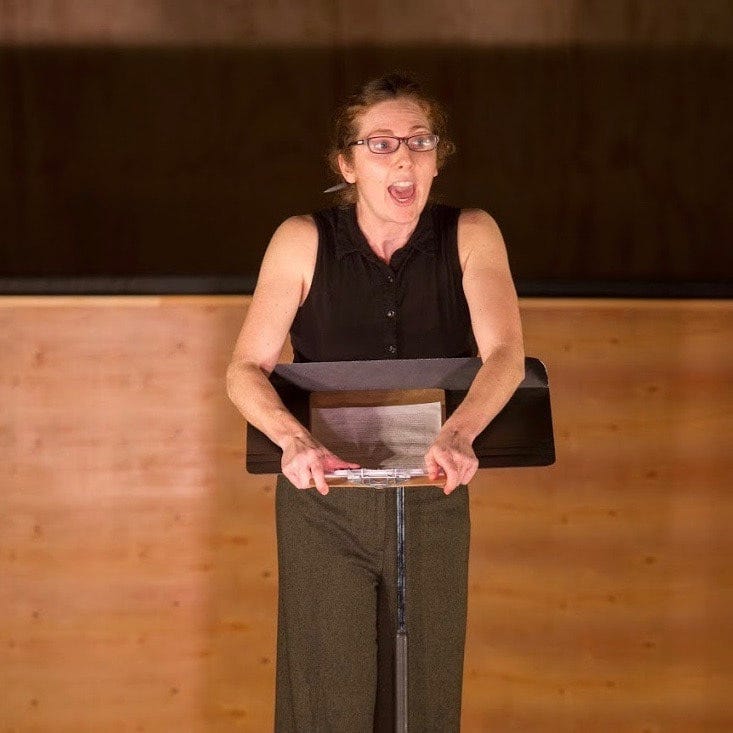
NP: How did the project come about? What inspired you to make this experience about chaos theory?
JC: After the 2016 election, it seemed like the orderly rules of the universe didn’t really apply anymore. Every morning brought new uncertainty and fear and that felt very much like chaos, so I found myself thinking that if the world was going to be chaotic for a while, perhaps was time to take a good hard look at what chaos really is, why we fear it, and how we can use it to our advantage in the coming years.
I began researching both the science behind chaos theory and what we began calling “colloquial chaos,” that feeling of disorder, uncertainty, and the notion that Something Has To Be Done About This that we associate with chaos in our daily lives. Chaos theory itself is highly systematic and where there’s a system there’s a game so I began looking at the core components of chaos theory — the butterfly effect, self-similarity, etc — and coming up with multiplayer games that essentialized those facets of chaos theory in a really playful way. From there this wild character, Dr. Saoch, emerged and I began to shape a narrative around the interplay between her professional life (systematic chaos), her personal life (colloquial chaos), and the audience (a little of both).
NP: How do you view the relationship between games and immersive theatre?
JC: Immersive theatre and games share a common core of inviting participant agency. In my option, they’re already besties, they just don’t necessarily know it yet. Broadly speaking, in both mediums, participants enter a world that is structured but not predetermined. They are able to make meaningful choices that significantly alter the course of events of the world they’re playing in. Games are particularly good at this. There’s no getting through a game without making meaningful choices (except Candyland, which is purely stochastic, but, to be fair, it was designed for four-year-olds, who are notoriously uninterested in systemic agency).
Get Kathryn Yu’s stories in your inbox
Join Medium for free to get updates from this writer.
SubscribeSubscribe
Immersive theatre, on the other hand, often boasts more compelling narratives, tension, and tactility. Where games often plunk down a set of rules to the world in one fell swoop, immersive theater doles them out over time in a delightful, satisfying, and tantalizing fashion.
The sweet spot, I think, is in experiences that provide participants with the lore and meaningful mechanics of game design alongside the physical connection and tightly woven narratives of immersive theater.
NP: How is the audience incorporated into the work? How are you designing around audience agency, consent, and safety?
JC: The audience is an audience in Chaos Theory. Wild, eh? They arrive for an academic lecture at their local meetup for Mathematical Scientists where there are snacks and name tags and a Meetup Coordinator to answer all of their questions and reassure them that the hummus is, in fact, gluten free. As the lecture progresses, the audience is asked to make choices that effect Dr. Saoch’s experiments. Each choice is designed to be personal to the players and, therefore, no experiment is ever the same. We wanted to make a piece that provided audience members an opportunity to explore what agency meant to them and to push past social biases to get at a deeper probing of what we all want out of life. For some people this means calling someone they haven’t spoken to in three years, for others it means providing emotional support for the person making that phone call.
Consent and safety rules are build into the piece in the first ten minutes and carry through to the very end. Audience members are invited to do some sociatally unacceptable things in this piece and finding a balance between giving them a safe, structured way to explore their own limits and consider why they’re choosing to do or not do something uncertain or scary while providing a clear and absolute way to opt out at any time was one of the exciting challenges of this piece. How do we take really serious concerns and give them the necessary gravitas while staying true to the world we build — which is a world of comedy.
One mechanic we landed on was safe words, that and the fact that we keep audience sizes small so that our team can keep eyes on everyone in case something looks off. Additionally, there’s nudity in the piece so we make that known ahead of time but we’ve made a point to neither hide it nor make too much of it. It’s just another mechanic that helps us tell the story.
NP: As this work is being developed what influences did the team find itself coming back to?
JC: One of the unexpected recurring themes in the piece is Jurassic Park, which I saw in the theater when I was five years old and had recurring nightmares about for years. When I told people I was making a show about chaos theory they immediately referenced Jeff Goldblum’s character in the movie so at a certain point I thought, OK, I have to be a grown up here and just watch the f*cking movie.
I figured if I was going to ask the audience to do things that scare them, I had to be willing to do the same. So I did. And it ended up becoming a major through line and inspiration for the show!
In keeping with the theme of blurring the boundaries between agency in a game-theater experience and agency in the outside world, my directors, Joe Ahmed and Amy Blumberg, made a point of reminding me any time I got nervous about leaving so much of the show in the audience’s hands, that I had told them on the first day of rehearsal that I wanted this show to keep me on the edge of my performative abilities; that I wanted all of us—me and the audience—to be discovering as we went. Those brilliant jerks threw that in my face pretty much every day. They really kept me on track, bless them.
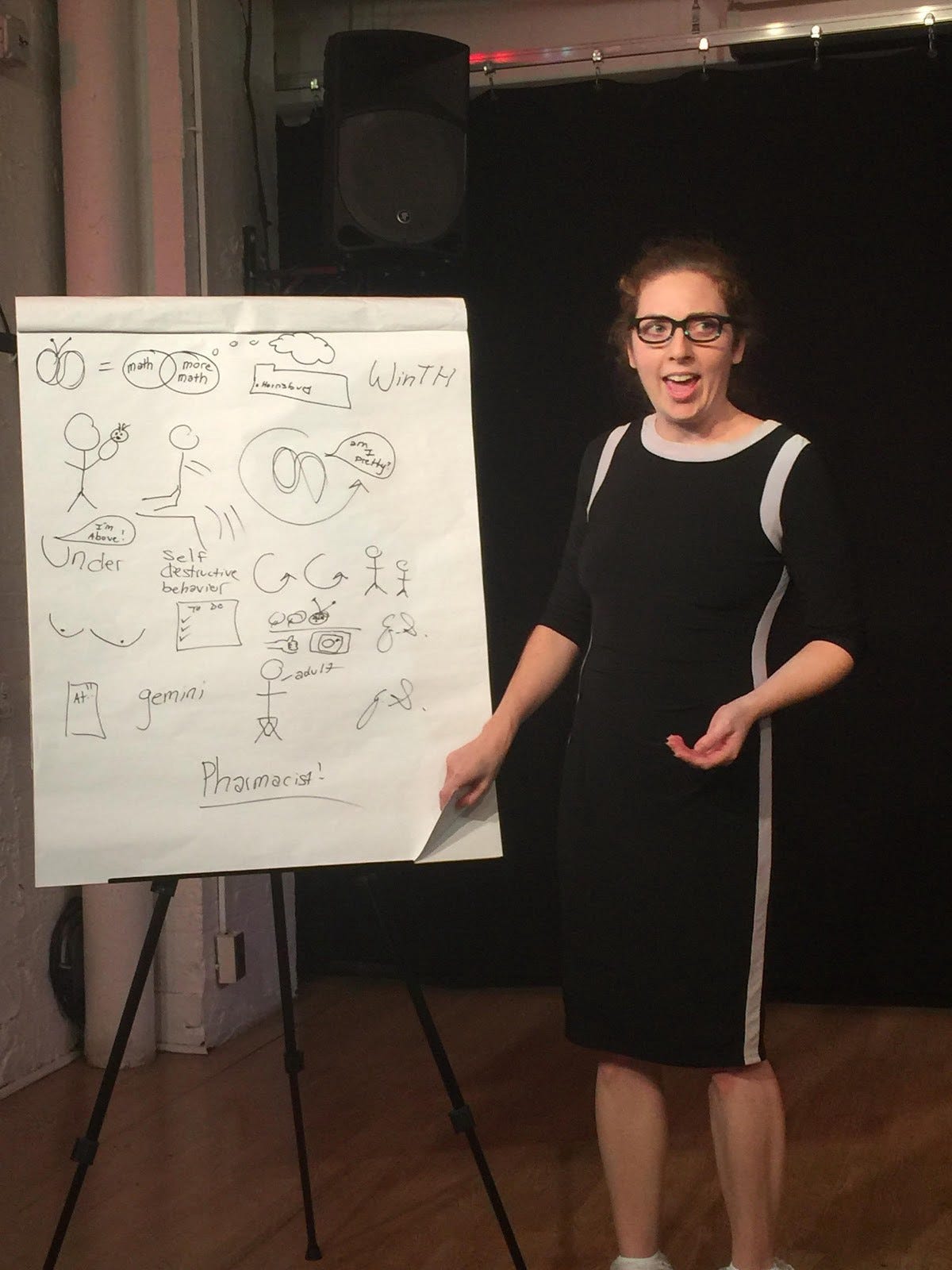
NP: Who is the ideal audience member for this show?
JC: People who enjoy improv, stand up, and who are, or wish to be, actively engaged with uncertainty in a really playful way. If you’re into word play, symbology, or game design, this show is also definitely for you, and if you’re into math and science, we’ve got your back, too. The show really straddles a line between immersive theatre and games to the point where the piece actually ends in October of 2019, inviting participants to engage with uncertainty and fear alongside the other members of their audience cohort for nearly a year afterward. It’s an optional extension, of course, but we wanted to provide a structure for people who are really intense about taking on challenges and achieving goals to do that within the playful framework of the piece.
NP: What do you hope participants take away from the experience?
JC: Something actionable. We’ve already had a few people leave the show and get tattoos, one person adopted a dog, two people fell in love (that I know of), we’ve had a few rekindled friendships, and one person started his own theater company and raised $1500 and established a board of directors in a month, so it’s really a make-of-it-what-you-will kind of show! My hope is that over the course of the year participants will surprise me with creative responses to the piece.
Chaos Theory plays December 18–20 at HERE in NYC. Tickets are $20.
No Proscenium is a labor of love made possible by our generous Patreon backers: join them today!
Brought to you in part by The Johnny Carson Center for Emerging Media Arts, who are seeking faculty candidates.
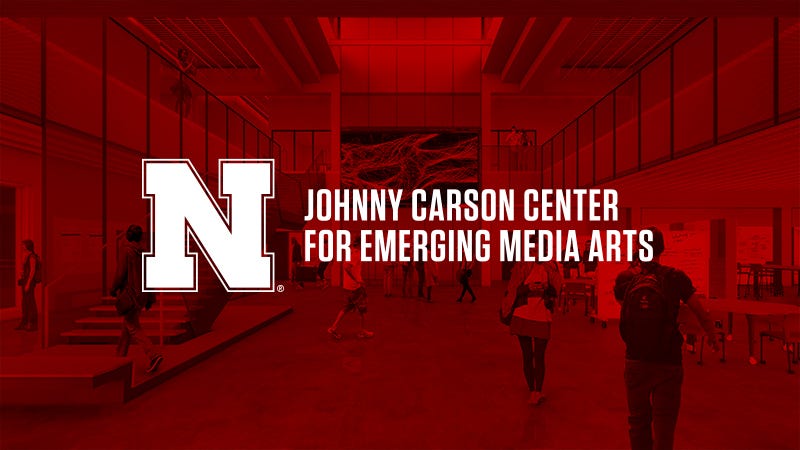
In addition to the No Proscenium web site, our podcast, and our newsletters, you can find NoPro on Twitter, Facebook, YouTube, Instagram, in our Facebook community Everything Immersive, and on our Slack forum.



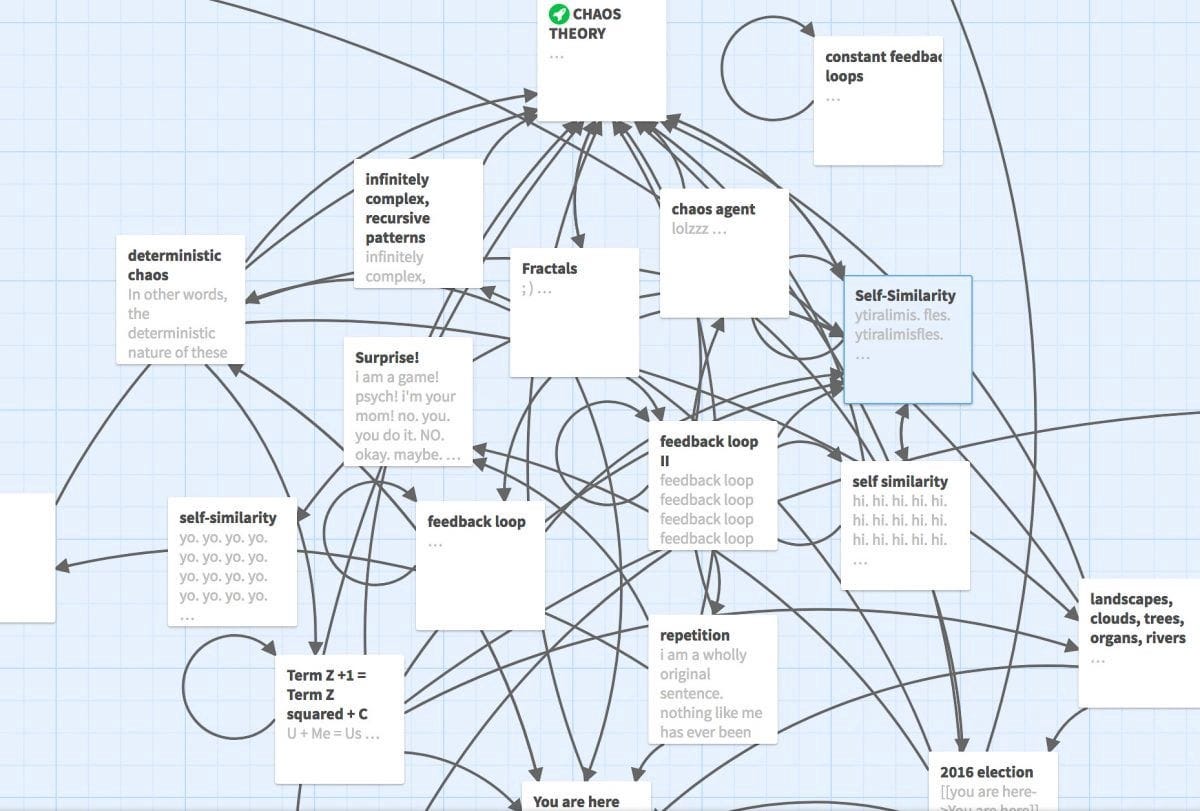
















Discussion